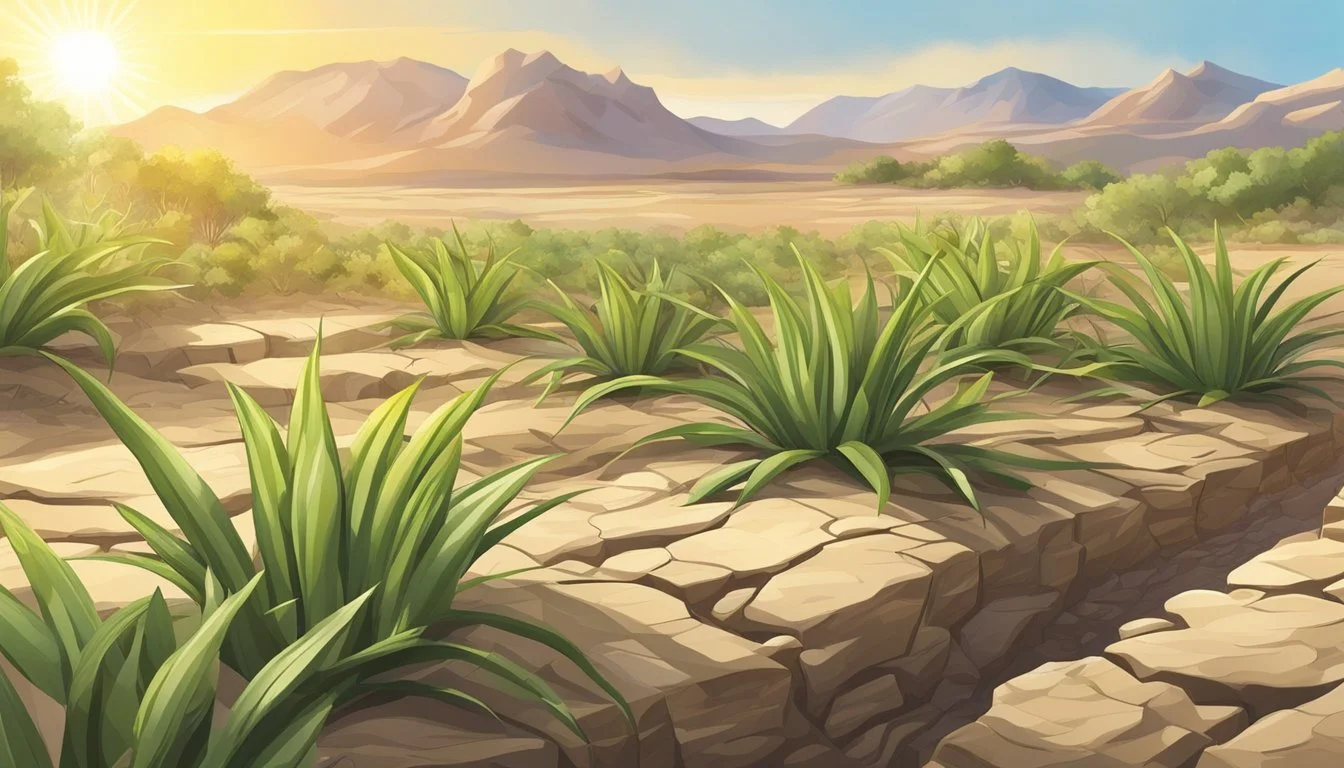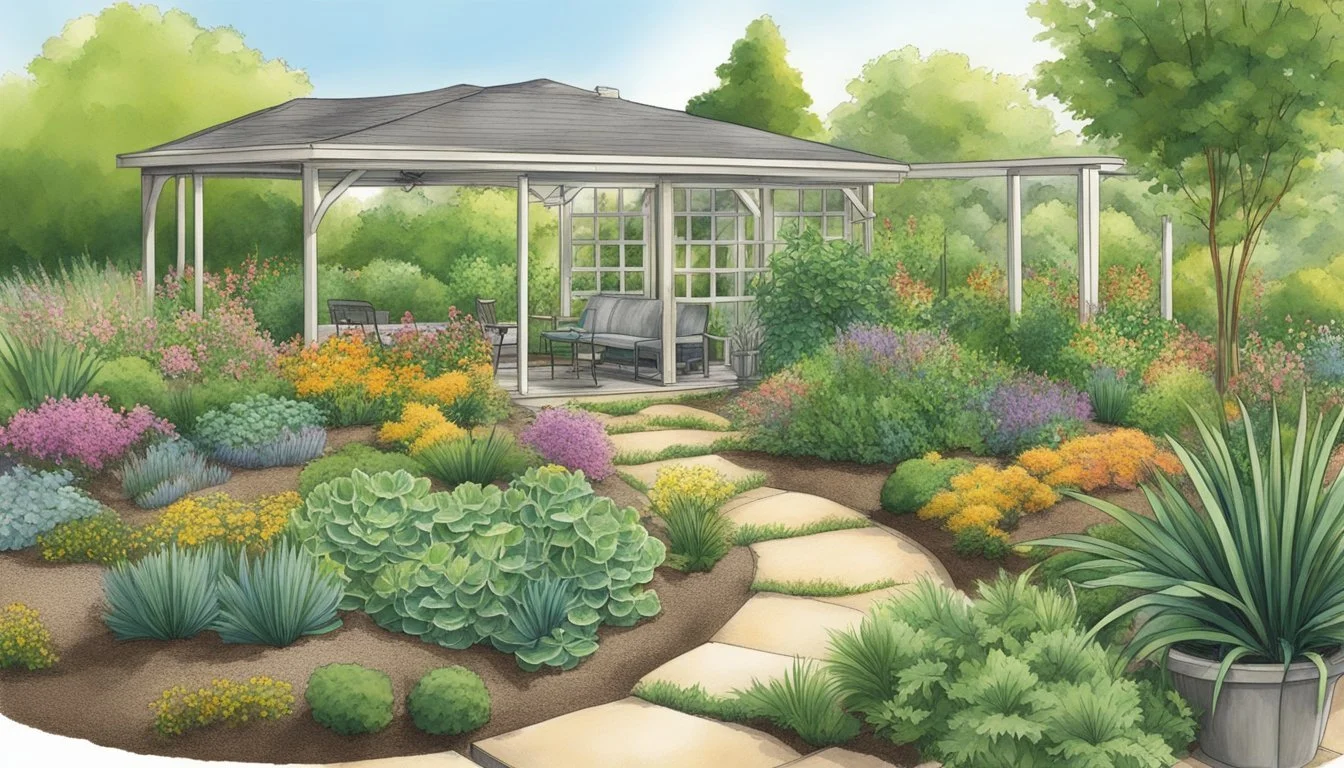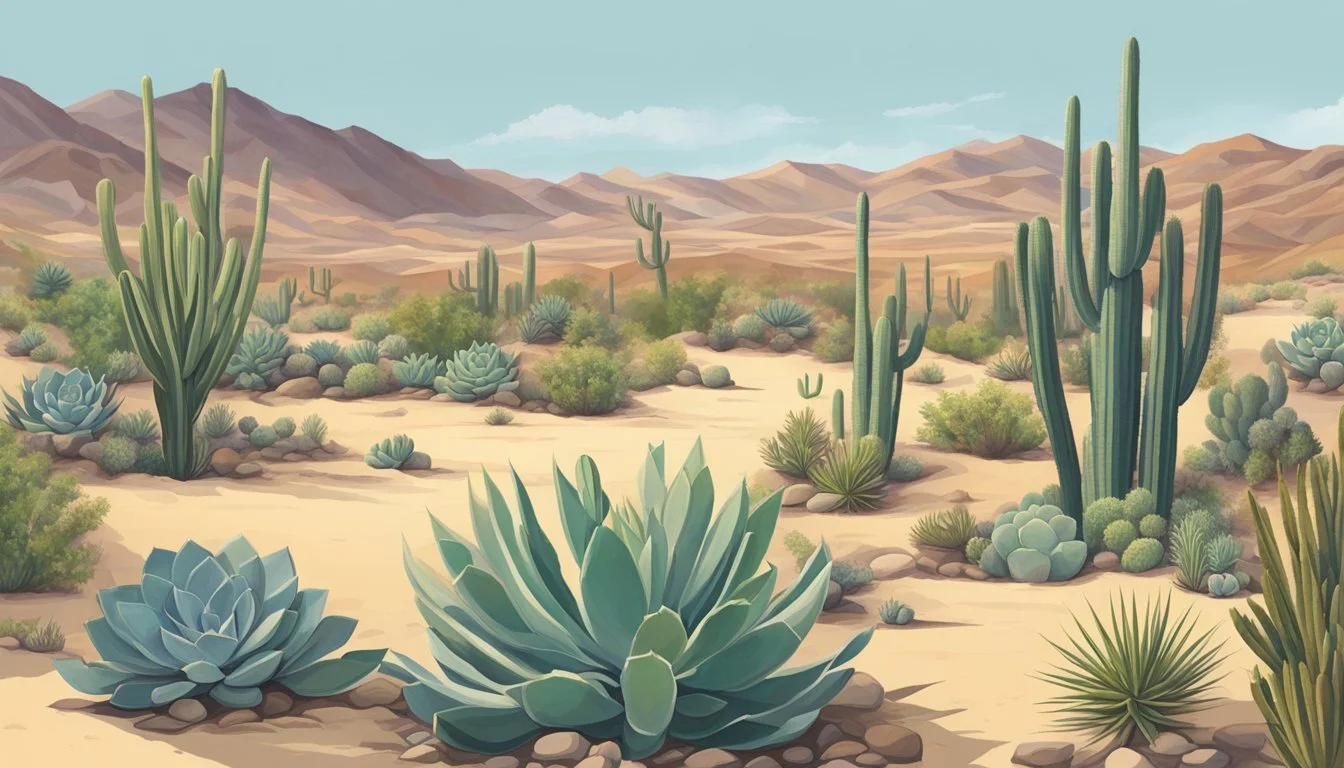Drought-Tolerant Plants in New Jersey
A Guide to Resilient Gardening
Drought-tolerant plants are increasingly important in New Jersey, where varying climate conditions pose challenges for both gardeners and the natural environment. These resilient species are adapted to thrive with minimal water, making them an ideal choice for sustainable landscaping. By incorporating drought-tolerant plants into their gardens, New Jersey residents can conserve water, reduce maintenance costs, and provide a natural habitat for local wildlife.
Native plants are particularly beneficial, as they are well adapted to the region's soil and climate conditions. For instance, the diverse ecosystems in New Jersey, ranging from the Pinelands to coastal salt marshes, are home to a variety of native plants that require minimal additional watering once established. Exploring Jersey-friendly plants and understanding their specific needs can lead to successful, low-water gardens that contribute to the local ecology.
Moreover, choosing the right plants for a drought-tolerant landscape can result in a garden that is not only environmentally responsible but also visually appealing. There are numerous options available, from trees and shrubs to annuals and perennials, each offering different textures, colors, and blooms that can enhance the aesthetic of any garden space. Gardeners can find a list of suitable plants, including those that are drought and heat tolerant, through resources such as the Penn State Extension, which highlights varieties that prosper in New Jersey's climate.
Understanding Droughts and Plant Adaptation
Droughts are extended periods of deficient rainfall resulting in water scarcity. They stress the natural environment and challenge the survival of plant species. Plants in drought-prone areas, such as New Jersey, have evolved various adaptation strategies to cope with water shortages.
Drought tolerance involves enduring low water conditions by adopting physiological and structural traits that minimize water loss or increase water uptake.
Drought avoidance is achieved by plants through mechanisms like deep rooting systems that tap into deep soil moisture or swift lifecycle completion before severe drought conditions can take effect.
Plants adapt to soil conditions altered by drought by adjusting their internal water conservation processes. Features such as waxy leaves, reduced leaf areas, and altered growth patterns are common physical adaptations.
Adaptive Responses:
Stomatal closure: Reduces water loss by transpiration.
Osmotic adjustment: Accumulation of solutes to retain water in plant cells.
Leaf modifications: Fewer or smaller leaves to reduce transpiration.
Certain drought-tolerant species exhibit remarkable resilience, maintaining growth and reproduction despite water limitations. These plants are crucial in drought-stricken ecosystems and for horticultural practices in arid regions.
In summary, understanding the strategies of plant adaptation to drought is essential for conservation and agriculture, especially in New Jersey's varied climatic zones, to ensure sustainability and biodiversity preservation under increasing climate variability.
Benefits of Drought-Tolerant Plants
Incorporating drought-tolerant plants into New Jersey’s landscape offers a multitude of benefits. These benefits span environmental advantages to practical gains, all contributing to a more sustainable interaction with the natural surroundings.
Environmental Benefits
Reduced Water Usage: Drought-tolerant plants significantly reduce the need for supplemental irrigation, which conserves water, a critical resource in New Jersey's varied climate.
Support for Local Wildlife: Native drought-tolerant species provide essential habitats and food sources for local wildlife, enhancing biodiversity.
Ecosystem Balance: By choosing plants adapted to New Jersey’s climate, homeowners and landscapers help maintain the balance of local ecosystems, avoiding the spread of invasive species which can threaten indigenous flora and fauna.
Practical Benefits
Lower Maintenance: These plants typically require less maintenance in terms of water, fertilizer, and pesticides, due to their resilience to harsh conditions.
Diverse Landscape Design: Drought-tolerant plants offer a wide variety of textures, colors, and shapes, allowing for creative and aesthetically pleasing landscaping options.
Cost Savings: Reduced need for water and maintenance translates into financial savings for property owners over the long term.
Selecting the Right Plants for New Jersey
Choosing the right plants for a garden in New Jersey means considering the specific climate and soil conditions of the region. The following subsections will guide the reader through key factors like climate, soil and water conditions, and sunlight requirements.
Considering New Jersey's Climate
New Jersey's climate varies from coastal to continental as one moves inland. The state experiences cold winters and warm, humid summers. Gardeners should look for plants that can withstand winter chill and hot summer days. Native plants typically have adapted to the local climate and can be better choices for gardens throughout the state.
Soil and Water Conditions
Soil types in New Jersey can range from sandy in the coastal areas to clayey in the interior regions. The ideal plants for New Jersey gardens should thrive in well-drained soil. For areas with drier conditions, selecting plants that are tolerant to drought can be beneficial, reducing the need for irrigation and maintenance.
Sunlight and Shade Requirements
The amount of sunlight available in a garden will determine which plants will thrive. In New Jersey, many native plants do well in full sun or partial shade. A garden with full sun exposure provides a wide range of planting opportunities, but for spots that receive less light, shade-tolerant species will be necessary. Gardeners can use this information to create a layered landscape featuring a variety of plants that support local ecosystems and reduce maintenance needs.
Native Plants and Their Ecological Impact
In New Jersey, native plants play a crucial role in maintaining ecological health, offering unmatched benefits to local wildlife and contributing significantly to regional biodiversity.
Benefits to Local Wildlife
Native plants serve as a cornerstone for wildlife habitat, providing essential resources for the survival of various species. They function as a nectar source for a multitude of pollinators, including bees, butterflies, and birds. These plants tend to be more resilient to local pests and diseases, which makes them more sustainable in supporting native fauna. Wildlife habitat improvement by integrating native flora into landscapes ensures that local species have the necessary food, shelter, and breeding grounds.
Contribution to Regional Biodiversity
Biodiversity is the lifeblood of an ecosystem, and the incorporation of native plants is vital for its enhancement. Indigenously adapted to New Jersey’s environmental conditions, these plants bolster the ecological niche by fostering a varied and robust habitat. Their presences are instrumental in establishing a stable ecosystem that can withstand and recover from environmental stresses, such as drought and climate change, thereby maintaining the health and balance of local environments.
Creating a Drought-Tolerant Garden
Creating a drought-tolerant garden in New Jersey involves careful planning and plant selection, ensuring resilience to dry conditions while minimizing water usage and maintenance needs.
Design Considerations
When designing a drought-tolerant garden, homeowners should focus on the overall layout to reduce water consumption. Sun exposure plays a critical role; areas that receive full sun should be planted with species that thrive in intense light and heat. Conversely, spaces with partial shade can support plants that need some respite from the sun. Landscaping should incorporate features like mulched beds that retain moisture, and rainwater collection systems to reuse natural precipitation.
Soil Composition: Amend soil with organic matter to improve water retention.
Irrigation: Drip irrigation systems are more efficient than sprinklers, directing water to plant roots with minimal loss to evaporation.
Plant Selection Strategies
Choosing plants that are native to New Jersey or adapted to similar climates is key for a drought-tolerant garden. Garden centers typically offer a variety of natives that require less water once established. Plants with deep root systems, such as the Aspen (Populus spp.), are great choices as they reach down to water reservoirs below the surface.
Lavender (Lavandula angustifolia 'Munstead'): Thrives in zones 5-8 with minimal water once established.
Russian Sage (Perovskia atriplicifolia): Suitable for zones 6-9, this plant adds height and color to the drought-resistant landscape.
Gardening Tips
Effective maintenance practices can greatly enhance the longevity and success of a drought-tolerant garden. Utilizing organic fertilizers can improve soil health without the need for excessive water. Similarly, opting for natural pest control methods lessens the reliance on chemical pesticides, which can be harmful to the environment.
Pruning: Regular removal of dead or dying foliage encourages healthy growth.
Mulching: A layer of organic mulch conserves moisture and suppresses weeds.
By implementing these strategies, one can establish a hardy, beautiful garden that stands up to the challenges of a dry environment, all while supporting local ecology and reducing the need for water, fertilizers, and pesticides.
Plant Profiles
In New Jersey, a variety of drought-tolerant plants, from sturdy trees and shrubs to vibrant wildflowers and practical ground covers, thrive across the state's diverse ecosystems. These plants have adapted to withstand periods of low rainfall, making them an essential component for sustainable landscaping.
Trees and Shrubs
Red Cedar (Juniperus virginiana): Offers year-round greenery and is tolerant of drought conditions. It's a common sight across New Jersey and serves as an early woody colonizer in open fields.
Eastern White Pine (Pinus strobus): With a rapid growth rate, this tree prefers full sun to partial shade and is relatively drought resistant, although it benefits from occasional watering during prolonged dry spells.
Wildflowers and Perennials
Black-eyed Susan (Rudbeckia hirta): A cheerful, sun-loving perennial that produces nectar-rich flowers, attracting pollinators and providing food for wildlife.
Purple Coneflower (Echinacea purpurea): Known for its striking blooms and medicinal properties, this wildflower sustains itself well under full sunlight and dry conditions.
Ground Covers
Bearberry (Arctostaphylos uva-ursi): A low-growing, evergreen plant perfect for ground coverage, Bearberry thrives in sandy soils and is highly drought-tolerant, often seen along the New Jersey coastal plain.
Supporting Wildlife with Native Flora
Utilizing native plants in New Jersey landscapes supports local wildlife, including butterflies, birds, and beneficial insects by providing essential food and shelter. These plants are well-adapted to the regional climate and soil conditions, making them a sustainable choice for both gardeners and the fauna they aim to attract.
Attracting Pollinators
Butterflies, bees, and hummingbirds play a crucial role in pollination. Integrating plants like Echinacea purpurea or Purple Coneflower, which draws a variety of these pollinators, can enhance biodiversity. Native species such as Achillea millefolium, commonly known as Yarrow, are also drought-tolerant and attract beneficial insects that contribute to a healthy garden ecosystem.
Providing Food and Shelter
Native plants offer more than just nectar for pollinators; they provide seeds, berries, and foliage that serve as food for various bird species. For example, the fruit of native Vaccinium species, such as blueberries, are a favorite among birds. Native flora can also create protective habitats. Dense shrubs and layered vegetation offer shelter and nesting sites for birds and small mammals. Plants with specific adaptations to New Jersey's environmental conditions, such as those listed by The Native Plant Society of New Jersey, are particularly effective at meeting the habitat needs of local wildlife.
Maintenance and Care for Drought-Tolerant Plants
Effective maintenance and care for drought-tolerant plants focus on establishing favorable water, soil conditions, and addressing pests and diseases efficiently. These practices ensure longevity and vibrancy in the garden, providing a hospitable environment with minimal resource input.
Watering Guidelines
Drought-tolerant plants require less frequent watering, allowing them to thrive in arid conditions. Initially, they need regular watering to develop deep root systems. After establishment, watering should be deep and infrequent, promoting root growth. A general guideline is to provide water once the top few inches of soil are dry.
Mulching and Soil Management
Proper soil management is crucial. Drought-tolerant plants do best in well-drained soils. Adding organic matter can improve soil structure. Mulching with organic materials such as shredded bark or leaves prevents evaporation, retains moisture, and regulates soil temperature. Aim for a mulch layer of about 2-3 inches, keeping it away from plant stems to avoid rot.
Disease and Pest Management
Disease and pest resilience are significant advantages of drought-tolerant species. Regular maintenance, however, is necessary to mitigate these issues. Inspect plants regularly for signs of stress that could attract pests or disease. Proactive measures include removing affected foliage and employing environmentally friendly pest control methods when necessary.
Resources and Further Reading
Exploring drought-tolerant plants in New Jersey requires reliable resources and educational materials. This section provides curated information for individuals and organizations seeking to deepen their understanding and involvement in this environmental endeavor.
Local Organizations
For those interested in partnerships and local endeavors, the Rutgers Cooperative Extension is a valuable resource for Homeowners and professionals to learn about drought mitigation and the selection of suitable plants for New Jersey's specific conditions. Additionally, the Native Plant Society of New Jersey offers comprehensive insights into native plants that are well adapted to the local climate, including those that are drought-resistant.
The Barnegat Bay Watershed and the Chesapeake Bay Watershed also offer community-focused programs aimed at preserving and enhancing their respective ecosystems through the use of native and drought-tolerant plants. Collaboration with these organizations can provide actionable guidance and foster a community-driven approach to conservation.
Educational Materials
Educational materials provide a foundation for understanding the importance of drought-tolerant plants. The Lady Bird Johnson Wildflower Center is an invaluable repository of information on native plants, which includes details about drought tolerance and their role in sustainable horticulture.
For region-specific information, many publications and guides detail the native plants suitable for New Jersey's Coastal Plain, focusing on their drought tolerance and benefits to local wildlife. These materials can serve as practical guides for selecting plants that contribute to water conservation efforts while enhancing the natural beauty of landscaped areas.
Frequently Asked Questions
In selecting drought-tolerant plants for New Jersey, it's essential to consider native species well-adapted to the local climate and soil conditions. These plants provide low-maintenance landscape solutions that conserve water while supporting local ecosystems.
What are some native drought-resistant ground covers suitable for New Jersey's climate?
New Jersey gardeners can use plants like Bearberry and Creeping Phlox as ground covers to conserve soil moisture and reduce watering needs. These species adapt well to the state's climate variations and provide dense coverage.
What low-maintenance evergreens thrive in New Jersey's varying weather conditions?
Eastern Red Cedar and American Holly are evergreens that withstand New Jersey's weather. They are resilient against both drought and cold, needing minimal care once established.
Which drought-tolerant plants are recommended for full sun areas in New Jersey?
For full sun areas, Black-Eyed Susan and Butterfly Weed are great choices. They are not only drought-resistant but also attract pollinators to the garden, adding vibrant colors and biodiversity.
What are the best options for low-water-use landscaping in New Jersey?
Opting for a xeriscape approach, incorporating native plants like Little Bluestem grass and Stonecrop, helps reduce water usage. These plants thrive in New Jersey's soil conditions and require less watering.
Can you suggest drought-resistant plants that also offer good shade in New Jersey?
The Red Maple tree is one example of a drought-tolerant species that provides ample shade. It is acclimated to New Jersey's environment and can grow well with little water once mature.
What native New Jersey plants require the least amount of watering for healthy growth?
Plants such as the New Jersey Tea and the Prairie Dropseed are indigenous to New Jersey and thrive without frequent watering, showcasing the beauty of native flora with minimal water usage.











